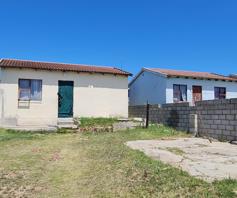Johannesburg’s residential landscape has been dramatically transformed by widespread densification over the past 15 years, and a growing number of areas are now dominated by cluster and sectional title developments.
 Whilst Randpark’s exceptional value within the desirable northern suburbs is undoubtedly the main driving force behind its thriving market, Ackerman says it is not the only drawcard attracting investors.
Whilst Randpark’s exceptional value within the desirable northern suburbs is undoubtedly the main driving force behind its thriving market, Ackerman says it is not the only drawcard attracting investors.This is according to Chantél Ackerman, Area Specialist for Lew Geffen Sotheby’s International Realty in Randpark, Fontainebleau, Malanshof and Ruiterhof, who says this is especially true of the mid-market areas where established suburbs comprising mainly freehold homes are now very much the exception rather than the norm of yesteryear.
“In response to this rapidly shrinking sector, we have seen a notable surge in demand for houses in the few remaining areas that have retained their original character, and in suburbs like Randpark we are even experiencing stock shortages despite the sluggish economy,” says Ackerman.
“Surrounded by rampant densification, Randpark remains 100% freehold, with the majority of the suburb’s 582 affordably-priced houses set on generous stands of around 1 500sqm and, when they do come onto the market, it’s still possible to buy a comfortable three to four bedroom family home for under R2 million.”
Citing Lightstone data, Ackerman says that between May and July this year, only 11 houses were sold in Randpark at an average sales price of R1.83 million which, in spite of the market slump, is 5% higher than the average price of R1.74 million for the 37 sales recorded during the previous 12 months ending 31 July 2016.
Ackerman says prices at the upper end of the market for houses overlooking the golf course are now reaching the R3 million mark.
Whilst Randpark’s exceptional value within the desirable northern suburbs is undoubtedly the main driving force behind its thriving market, she says it is not the only drawcard attracting investors.
“Forming part of Johannesburg's expansive and scenic man-made forest with the Randpark Golf Club and luxurious Fairway Boutique Hotel and Spa at its heart, Randpark offers a lifestyle that would traditionally be exclusive to the city’s most upmarket and expensive suburbs,” says Ackerman.
 “Forming part of Johannesburg's expansive and scenic man-made forest with the Randpark Golf Club and luxurious Fairway Boutique Hotel and Spa at its heart, Randpark offers a lifestyle that would traditionally be exclusive to the city’s most upmarket and expensive suburbs,” says Ackerman.
“Forming part of Johannesburg's expansive and scenic man-made forest with the Randpark Golf Club and luxurious Fairway Boutique Hotel and Spa at its heart, Randpark offers a lifestyle that would traditionally be exclusive to the city’s most upmarket and expensive suburbs,” says Ackerman.“Buffered from the urban densification and commercial development of its neighbours, residents enjoy a tranquil suburban atmosphere and the benefits of easy access to myriad outdoor activities in well-maintained green spaces and top-class sports facilities.”
She says most existing owners recognise the value of their homes and the fact that it would be very difficult to replace their current lifestyles at a similar price, and many are therefore hanging on to their investments.
“More than half of the current residents have owned their homes for longer than 11 years, with 56% of them being in the 50-plus age group,” she says.
“Conversely, 46% of the investors who bought in the last year were aged 35 or younger.”
According to Lew Geffen, Chairman of Lew Geffen Sotheby's International Realty, Randpark’s flourishing market and increasingly limited stock has had a positive knock-on effect on its once-overlooked neighbour, which is now emerging from the shadows of the more prominent suburb.
“Although the border between Randpark and Fontainebleau has always been indistinct, the latter has never enjoyed the same status, but this is now changing as a growing number of investors have begun to appreciate Fontainebleau’s value and appeal,” says Geffen.
“Fontainebleau has quietly evaded rampant development over the years and still comprises 80% freehold properties, but the fact that the suburb’s sizeable plots literally invite subdivision has begun to attract the attention of developers.”
However, Geffen says Fontainebleau may be spared the fate of many adjacent areas where houses have long since given way to cluster complexes and sectional title developments.
“Fontainebleau has become very popular with investors who are buying older house to renovate and resell, with around 40% of the homes now upgraded. The gradual revival of this old neighbourhood is attracting a new calibre of buyer and pushing up property values.”
Investors can now expect to pay up to R2.8 million for a fully renovated four bedroom house in Fontainebleau.
Geffen says the suburb’s recent market growth is clearly evidenced by Lightstone data which reveals that between 2007 and 2014 the median house price in Fontainebleau generally hovered between R1.1 million and R1.3 million, but by the end of 2015 it had jumped to R1.5 million, increasing further to R1.575 million by the end of the second quarter of 2016.
Ackerman says that as the commercial and retail offerings in both areas have been upgraded over the past decade and more schools have been built, both traditionally Afrikaans-speaking suburbs have increasingly attracted a more diverse demographic.
However, she doesn’t anticipate much more commercial development in the two established communities in the medium term.
“While existing business and retails centres have been upgraded, the last major development was the Fairway Hotel and Spa and, for now, there are no further projects in the pipeline.”






